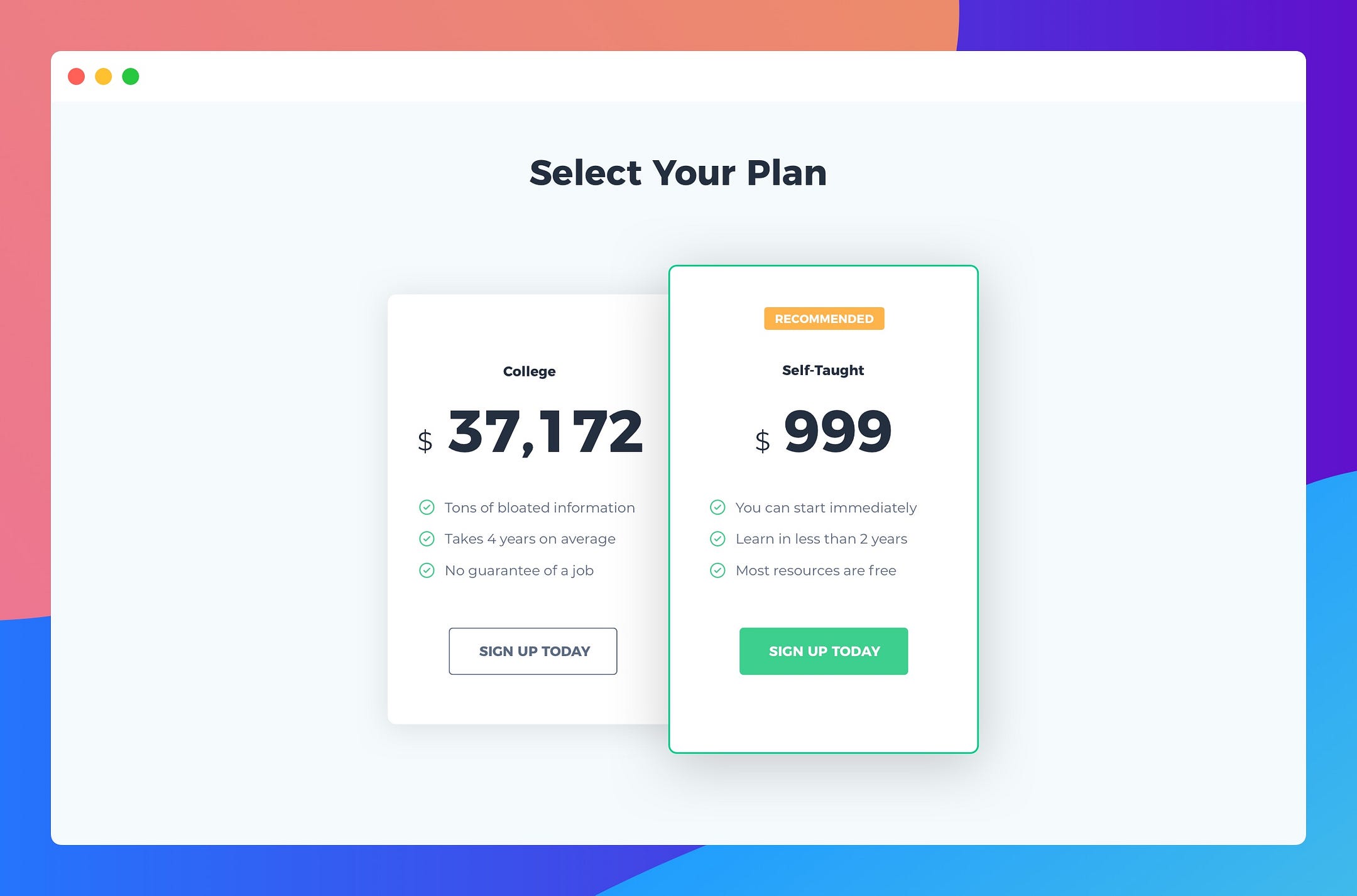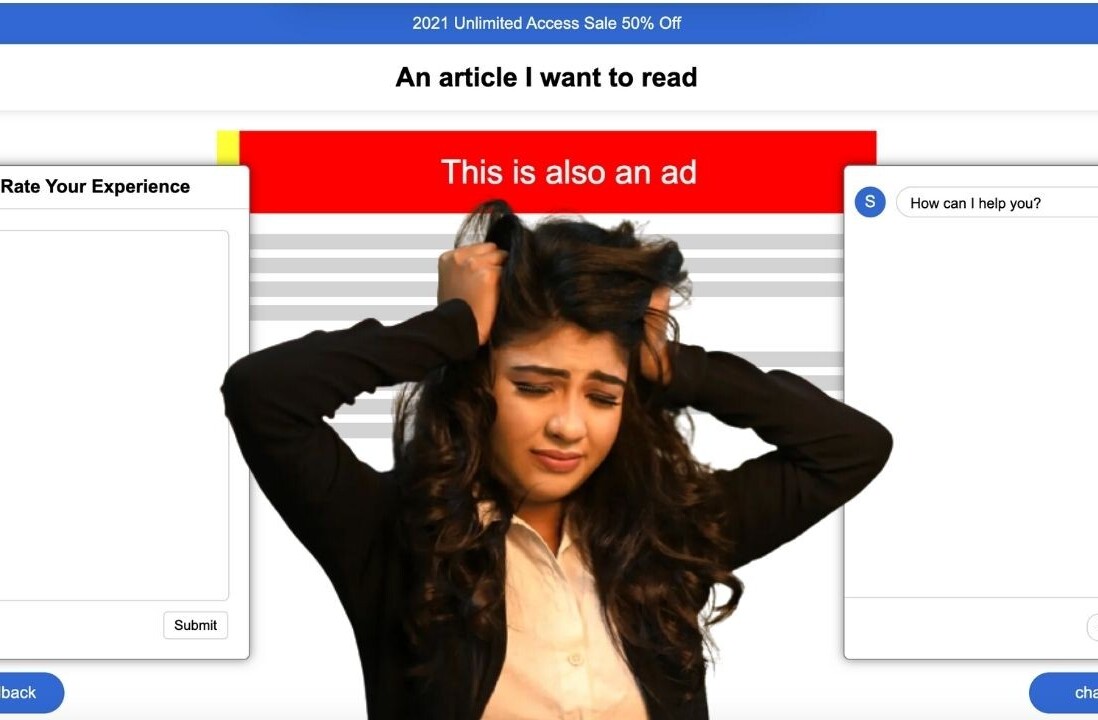
It was a regular day at the office, and I was sitting in the common area of our open office space with my manager at the time. We were seated around a table of supplies gluing squares of patterned wallpaper to those sample tiles that you get at hardware stores like Lowe’s or Home Depot. It was arts and crafts day at the office, so we were making DIY coasters.
I’d been interning at Skookum, a software consulting agency, for almost two months. She and I were chatting about Mexican food for whatever reason, and she mentioned that there’s a Mexican spot near where she went to college that has delicious tacos. We chatted briefly about other related college experiences of hers, and then in passing, she asked — “where did you go to school again?” — I’d never told her. I’d never told anyone at Skookum, actually.
Not because I was ashamed or embarrassed — it had simply never come up. Not once in interviews, onboarding, or casual conversation — until this conversation, at least. I told her I went to business school for a little over a year then dropped out to pursue a side project full time. I explained that as the company grew, it consumed so much of my time that if I wanted to take it seriously, then I needed to put school on hold. I ended up running the company full time for a year and then selling it. She smiled and said: “Look at you!”
I thought to myself, how have I gotten this far with no one even asking about whether I went to college or not? I was only an intern at the time, but I would later become a full-time employee. Degrees didn’t appear to be something that the decision-makers cared about, which was surprising to me.
I guess I was surprised mainly because growing up; it had been drilled into my head (mostly by teachers and my friend’s parents) that the only way to get a good job was to go to college. It wasn’t that I believed them; it was just I thought it would be more challenging than it was and has been to build a career in design without a degree.
Colleges have historically struggled to keep up with the pace of technology. For this reason, all of the designers I know, whether they attended college for design or not, are self-taught in some regard. If designers had to go back to school to get a certificate every time a new update for Sketch was released, then design and UX would progress at a snail-like pace.
But the world of design moves faster than ever. What is relevant today will be old news tomorrow. The design tool or trend people are gawking at today will be replaced with a new one in a short amount of time. The benefit of working in tech is things move fast, and the only way to keep up is to be continually learning.
Luckily, it’s 2019, so there are thousands upon thousands of online resources, articles, courses, tutorials, and content available for free or cheap to help us keep up with the changes. With the rapid rate at which design standards change and new tools, disciplines, or best practices are introduced, it’s no wonder the majority of tech companies aren’t asking for college degrees.
If we look at Facebook, for example, a quick skim through their job listing for ‘Product Designer’ shows no mention of a degree of any kind anywhere.
And it’s not just Facebook. I browsed Product Design positions for Airbnb, Doordash, Tinder, Coinbase, New York Times, Shopify, and Mailchimp — none of them require any formal education to be qualified. I also checked local listings for my city, Denver, on BuiltInColorado. Out of the ones I checked, Havenly, Mersive, JumpCloud, Gusto, and our very own Skookum — no degree is required.
The only company I could find that requires at least a bachelor’s degree is HelloFresh. I’m sure others have this requirement, but I had trouble finding them while browsing job boards. Some companies, like Airbnb, for example, mention having a BFA/MFA or equivalent industry experience as a bonus but not a requirement.
I would prefer to work for a forward-thinking company that sees value in hiring people based on talent and grit, not what college they went to. Luckily, this appears to be the norm. Companies hire good designers, not bad designers with degrees.
If you’re a good designer who has a degree, then that’s great! You’re in a much better position when applying for jobs. If you’re a bad designer with a degree, then it doesn’t change the fact that you’re a lousy designer. In addition to being a well-rounded designer with experience solving complex problems, companies are looking for candidates who’ll be a good culture fit, collaborate well with their team, and someone who is business-minded.
Communication skills are frequently mentioned in job postings as well as more straightforward skills like fluency in design programs such as Sketch, Figma, Framer, XD, and the Adobe suite. Companies want to see a wealth of experience and diverse projects in your portfolio. They want to see you solving unique problems and demonstrating strong visual and UX skills.
Having a user-centric approach to problem-solving through research and user testing is also something that will set you apart in an interview. Companies want someone that demonstrates being a do-it-yourselfer. Someone who is passionate about design and is working on design in some manner, continually. A person with a quest for constant improvement.
That means someone working on side projects, doing illustration challenges, making animations for fun, picking up freelance work on the side, or reading design books on the bus to work. It’s education versus experience, and experience will win every time.
What the amateur calls genius, the professional calls practice. — Robin Sharma

College may seem like a sensible option at first glance. People have relied on post-secondary education to advance their careers for ages, so why the sudden change of tone? Well, for starters, education has gotten cheaper. Ambitious learners can now turn to places like YouTube and Medium to learn in-demand skills for free or for cheap.
At the same time, college is more expensive than ever and only getting more expensive. The average price of college in the US has gone up 163 percent since 1988. In comparison, a 1-month membership to LearnUX.io, a well-respected resource for designers, is a mere $15. Meanwhile, the average college student spends more than $1,200 on books and materials, according to the College Board.
The average student debt was $37,172 in 2017. On top of the high price tag, it takes on average four years for students to obtain a degree. Personally, I’m sure I’ve spent less than $1,500 in my entire career on design resources and tools. That includes software, books, resources, courses, and design plugins. I also was able to learn UI/UX at a proficient level in less than two years.
Let’s say the worst case, it takes someone two years of busting their ass trying to learn product design and ending up with $2-$5k in debt, and they’re unable to find a job. If this is the worst-case scenario, then it’s an easy recovery. Yes, they’ve wasted time and money, but they’ve certainly learned something in this process that can be applied to almost any other profession in tech.
The college grad, however, is burdened with almost $40k in debt, likely has bad credit because of it, and still only able to start their career in UI/UX at the ground level with an entry-level position. If they’re unable to find a job, then it’s much less of an easy recovery.
My point with this article is not to knock anyone who went to school for design. There is undoubtable value that can be derived from that experience. School can teach you the fundamentals of design and the soft skills that are essential for any designer. School can also help give you thicker skin through defending your decisions in design critiques and other experiences that are less common for self-taught designers.
It can be easy to lose motivation when learning a new skill on your own, and it’s less enjoyable without that collaborative environment to lean on. There are also numerous networking and career-building opportunities afforded to college students that would be hard to acquire on your own.
I don’t want to downplay the benefits of a college education; I’m aware there are numerous. However, if we are looking logically at the facts, it is the most expensive way to get into product design with no guarantees of a payoff.
When looking at cost, time, and value, we aren’t comparing apples to apples. We’re comparing $37,172 for college to $2,000 (at the high end) to learn on one’s own accord. We’re comparing an average of a 4–6-year time investment for college to 1–2 years to do it on your own. If being self-taught isn’t something that you feel is a good fit for you, and college is too expensive, then boot camp is the next cheapest option.
I wrote an in-depth article about the pros and cons of going to General Assembly for UX that I recommend reading if you’re in that boat. The main message I want to convey here is that you can take many routes and end up at the same destination. There is no one size fits all approach, and there is no blueprint for success in such a diverse industry like design.
If you’re at the beginning of your journey and seeking the optimal path, then know that attending college for design is one option, but it isn’t essential to becoming a UI/UX designer. I’d urge you to evaluate your options and find the path that works for you to get into this field. Ignore the gatekeepers telling you that there’s only one prescriptive approach for success.
There will be people that tell you that you need to go to boot camp or design school to be a great designer. There will also be people that tell you that being self-taught will make you more creative and unique. Some will tell you that it’s not easy to get into this industry, and you need to have a natural talent or ability — but it’s all false.
People who say things like that are just insecure about themselves and are worried that if other people enter the industry that it will threaten their position. Anyone with the ambition and motivation to become a UI/UX designer can learn for free or less than the cost of an average college class in 2 years or less.
If you’re willing to be an autodidact and push your creative limits daily, then you’ll fit in just fine, and don’t let anyone tell you otherwise. A career in product design isn’t rocket surgery — it’s practice, and it’s work.
This article was originally published on uxdesign.cc by Danny Sapio, a Product Designer at Skookum, Entrepreneur, and Phở Enthusiast in Denver, CO. You can read the original article here.
Get the TNW newsletter
Get the most important tech news in your inbox each week.





